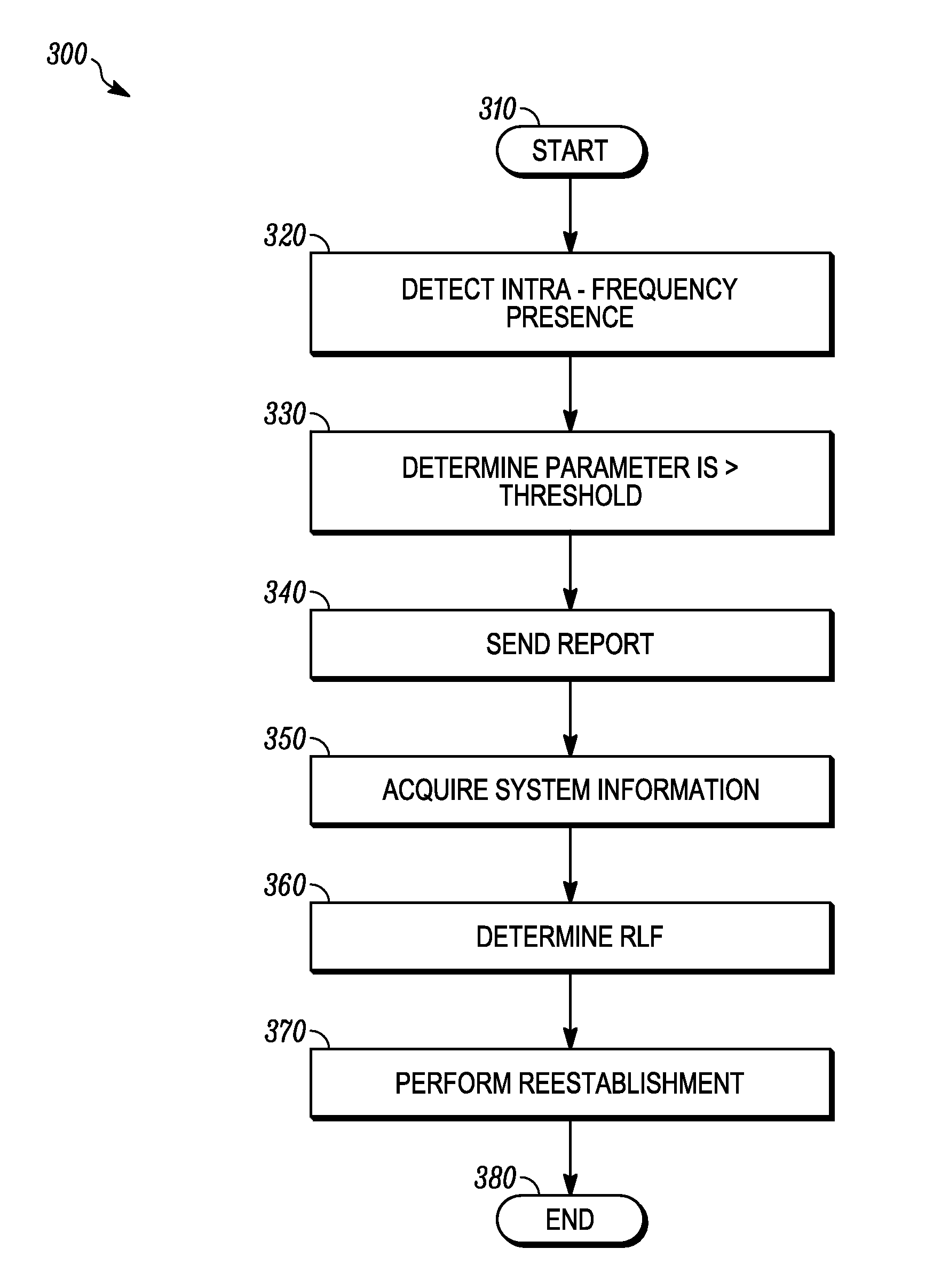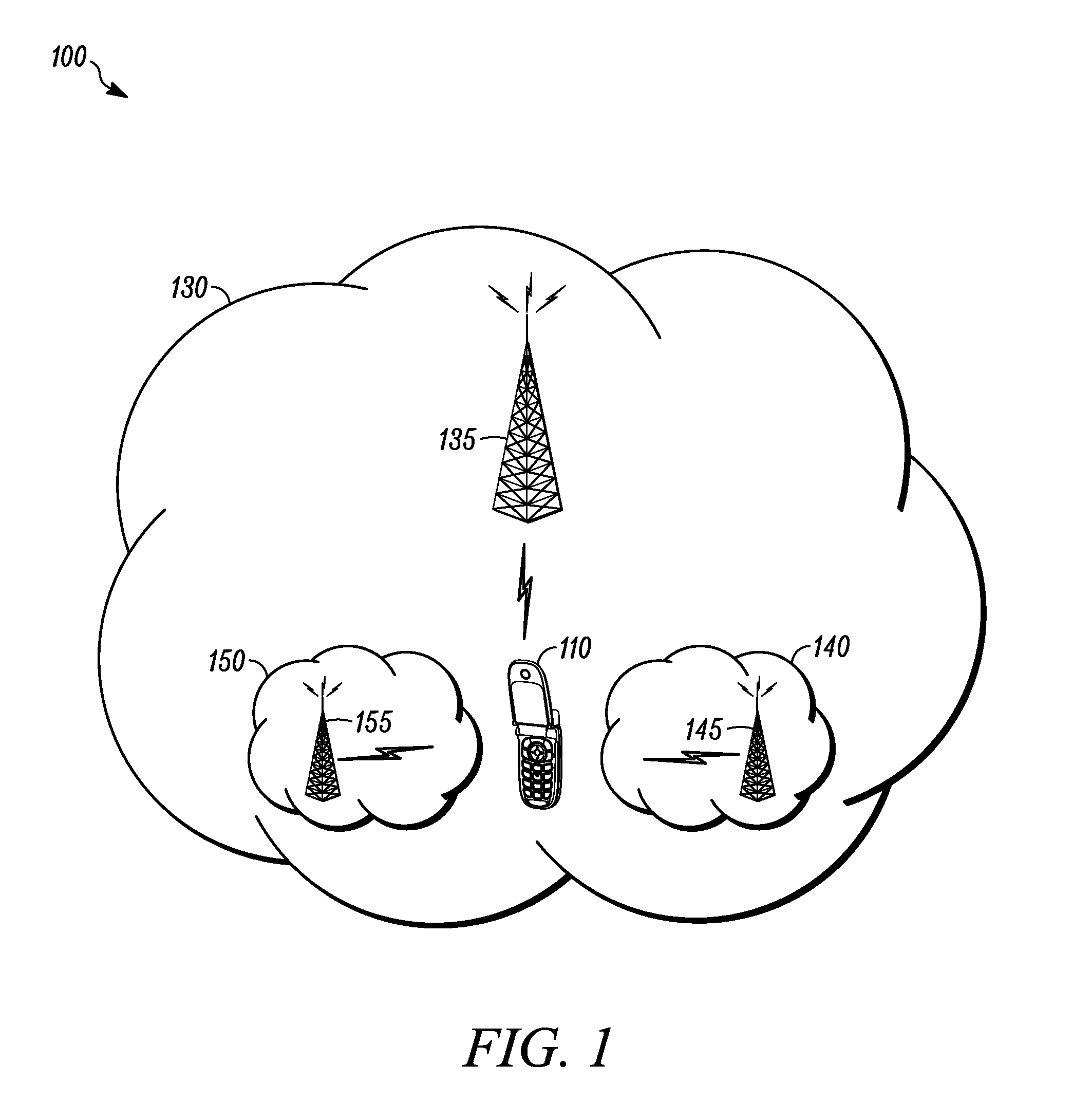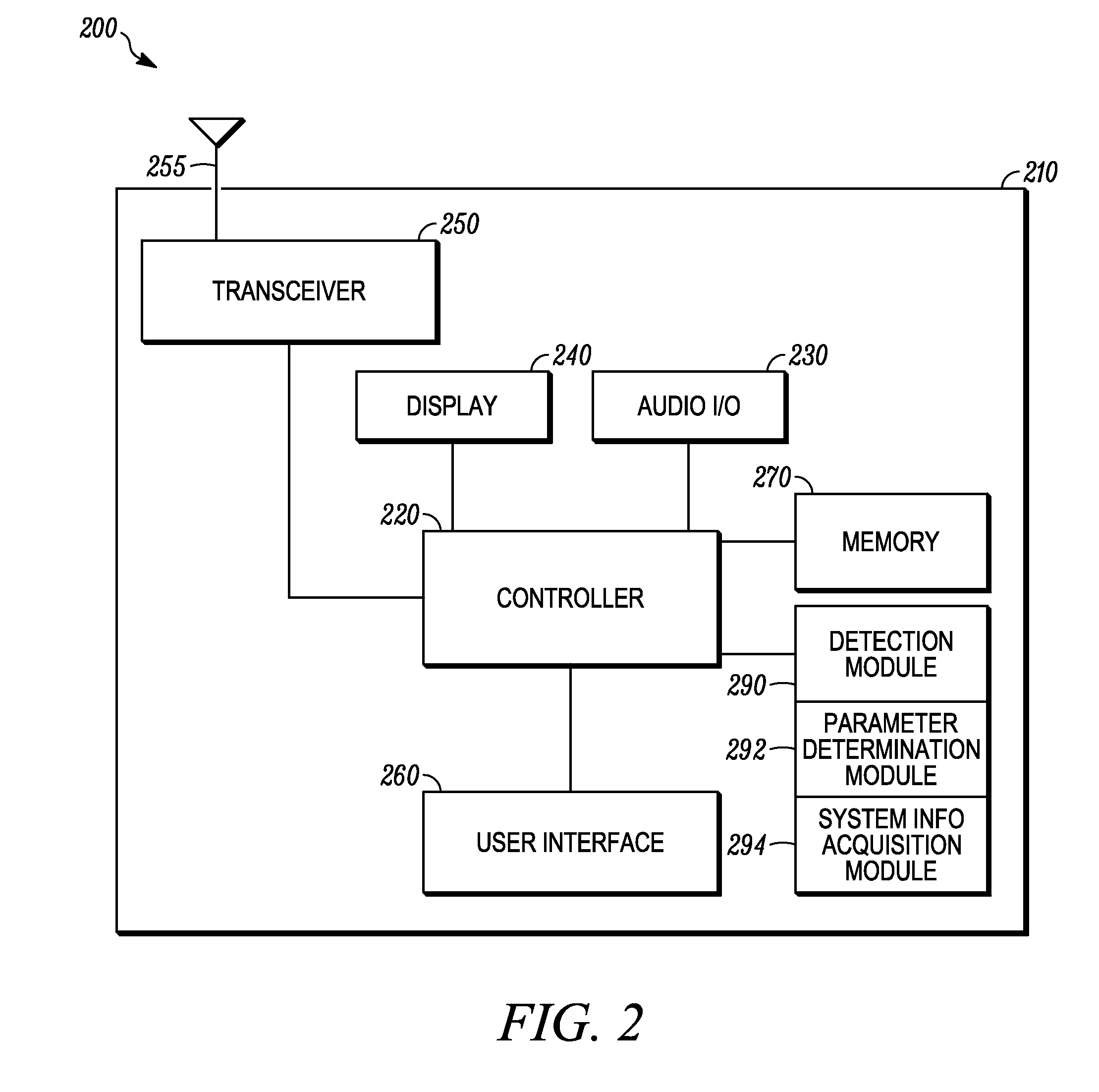Method and apparatus for radio link failure recovery
a radio link and recovery method technology, applied in the direction of electrical equipment, transmission monitoring, network topologies, etc., can solve the problems of radio link failure, normal communication cannot be maintained, wireless communication device can drop a connection,
- Summary
- Abstract
- Description
- Claims
- Application Information
AI Technical Summary
Benefits of technology
Problems solved by technology
Method used
Image
Examples
Embodiment Construction
FIG. 1 is an exemplary block diagram of a system 100 according to a possible embodiment. The system 100 can include a terminal 110, a serving cell 130 including a serving base station 135, a first cell 140 including a first base station 145, such as an intra-frequency neighbor base station, and a second cell 150 including a second base station 155, such as an inter-frequency neighbor base station. The intra-frequency neighbor base station 145 can provide cell coverage on a same frequency as the serving base station 135. The inter-frequency neighbor base station 155 can provide cell coverage on a different frequency from the serving base station 135.
The base stations 135, 145, and 155 can be macro base stations, home base stations, access points or other base stations. For example, the second cell 150 can be a home cell or can be a macro cell. The terminal 110 may be a mobile station, such as a wireless communication device, which can be a wireless telephone, a cellular telephone, a ...
PUM
 Login to View More
Login to View More Abstract
Description
Claims
Application Information
 Login to View More
Login to View More - R&D
- Intellectual Property
- Life Sciences
- Materials
- Tech Scout
- Unparalleled Data Quality
- Higher Quality Content
- 60% Fewer Hallucinations
Browse by: Latest US Patents, China's latest patents, Technical Efficacy Thesaurus, Application Domain, Technology Topic, Popular Technical Reports.
© 2025 PatSnap. All rights reserved.Legal|Privacy policy|Modern Slavery Act Transparency Statement|Sitemap|About US| Contact US: help@patsnap.com



